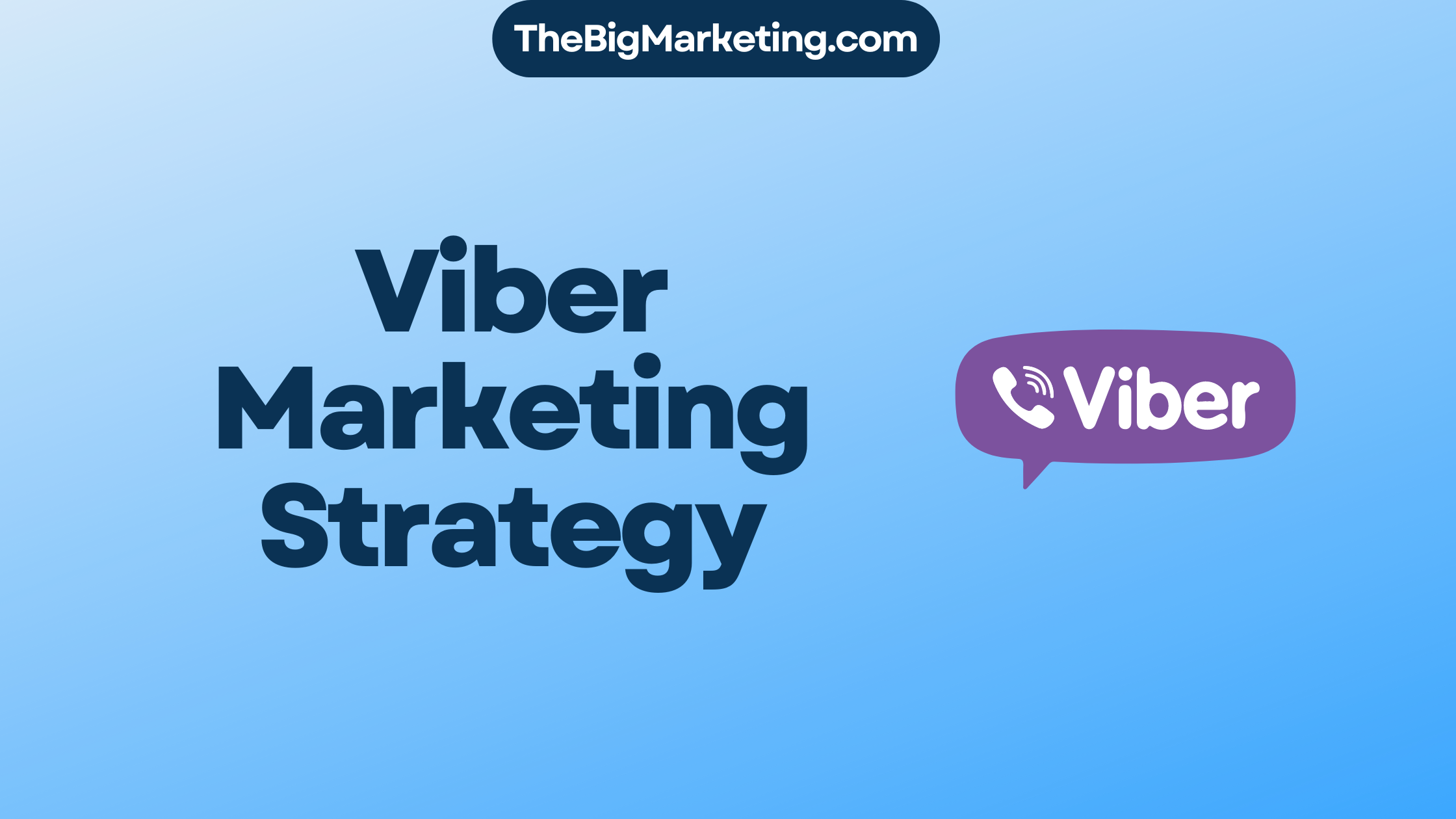In 2024, the B2B manufacturing industry is more competitive than ever. Standing out in a crowded market requires a multifaceted marketing strategy that encompasses various objectives, including brand awareness, lead generation, client retention, and sales support. To achieve success in B2B marketing, manufacturers must embrace innovative approaches and leverage the power of effective marketing strategies tailored to the unique needs of the industry.
Key Takeaways
- Establishing a consistent brand identity is crucial in B2B manufacturing.
- Thorough research and understanding of ideal customers help tailor marketing strategies.
- Targeted outbound channels play a significant role in generating direct leads.
- Value-driven content is vital in attracting and engaging potential customers.
- Enhancing the customer experience can lead to better brand loyalty and satisfaction.
Establish a Consistent Brand Identity
A consistent brand identity is crucial in the B2B manufacturing industry. It is the foundation upon which your company’s reputation and credibility are built. By establishing a strong and cohesive brand identity, you can differentiate yourself from competitors and create a lasting impression on your target audience.
Here are the key elements that contribute to a consistent brand identity:
Logos
Your logo is the visual representation of your brand. It should be unique, memorable, and aligned with your company’s values and offerings. A well-designed logo can leave a strong impression and help customers recognize and associate your brand with professionalism and quality.
Color Palettes
Choosing the right color palette is essential for creating a cohesive and recognizable brand identity. Colors evoke emotions and can influence how your brand is perceived. Whether your palette is bold and vibrant or subtle and elegant, consistency in color usage across all marketing materials helps reinforce your brand’s identity and personality.
Typography
Typography plays a vital role in conveying your brand’s tone and personality. Selecting consistent fonts and using them consistently across all communication channels helps establish a cohesive visual identity. Whether your brand exudes professionalism, creativity, or innovation, the right typography can reinforce your intended message.
Imagery
Images and visuals are powerful tools for communicating your brand’s narrative. By using consistent imagery that is aligned with your brand’s values and target audience, you can enhance brand recognition and create a cohesive visual identity. Whether it’s product photography, illustrations, or infographics, imagery should reflect your brand’s style and evoke the desired emotions.
By focusing on these elements of brand identity – logos, color palettes, typography, and imagery – you can create a cohesive and professional image for your B2B manufacturing brand. Consistency across all touchpoints, from your website to your marketing collateral, builds trust and fosters a strong brand association in the minds of your customers.
| Logo | Color Palettes | Typography | Imagery |
|---|---|---|---|
| A well-designed and memorable logo can leave a lasting impression. | Consistent color usage across all marketing materials reinforces brand identity. | Typography plays a vital role in conveying brand personality. | Use imagery that aligns with brand values and creates a cohesive visual identity. |
| Captures attention and establishes brand recognition. | Colors evoke emotions and influence brand perception. | Consistent fonts reinforce brand identity. | Images reflect brand style and evoke desired emotions. |
Spend Time Researching Your Ideal Customers
Understanding your ideal customers and decision-makers is vital in B2B marketing. By conducting thorough market research and data analysis, you can gather valuable insights into your target audience’s needs, pain points, and preferences. This information forms the foundation for creating comprehensive buyer personas and developing an ideal customer profile.
Creating accurate and detailed buyer personas enables you to align your messaging and marketing strategies with the specific characteristics and motivations of your target audience. By identifying the key demographic and psychographic traits of your ideal customers, as well as their roles and responsibilities as decision-makers, you can tailor your approach to resonate with their unique needs.
Conducting Effective Market Research
To develop an in-depth understanding of your target audience, start by conducting thorough market research. This involves analyzing industry trends, competitor strategies, and customer behavior. Primary research methods such as surveys, interviews, and focus groups can provide valuable firsthand insights from your existing customers and prospects.
Secondary research, on the other hand, involves gathering information from existing sources such as industry reports, market studies, and publicly available data. By combining both primary and secondary research, you can ensure a comprehensive understanding of your target audience’s pain points, challenges, and buying behaviors.
Building Accurate Buyer Personas
With the data collected from market research, you can create accurate and detailed buyer personas. These personas represent fictional, yet realistic, representations of your ideal customers. They encompass demographic information, professional backgrounds, goals, challenges, and other relevant characteristics.
When creating buyer personas, consider factors such as job titles, responsibilities, industry expertise, and pain points. This information helps you tailor your messaging and marketing strategies to address the specific needs and challenges faced by different segments of your target audience.
Utilizing Buyer Personas to Drive Results
Once you have developed buyer personas, you can leverage them to inform various aspects of your marketing strategy. Use your personas to guide content creation, messaging, channel selection, and campaign targeting.
By understanding the motivations, pain points, and preferred communication channels of your ideal customers, you can create and distribute content that resonates with them. This includes blog posts, case studies, whitepapers, webinars, and more, all tailored to address the specific challenges and goals of each persona.
Furthermore, your buyer personas can inform your decision-making when selecting marketing channels and platforms. By focusing your efforts on the channels where your ideal customers are most active, you can maximize the impact of your marketing campaigns and increase the likelihood of engaging with your target audience.
Ultimately, thorough research and the development of accurate buyer personas enable you to create more personalized and effective marketing strategies. By understanding the needs and preferences of your ideal customers and decision-makers, you can build strong connections, nurture relationships, and drive meaningful results in the competitive B2B manufacturing market.
Generate Direct Leads through Targeted Outbound Channels
In today’s competitive B2B market, effective lead generation is crucial for driving business growth. By leveraging targeted outbound channels, you can reach your potential customers directly and generate valuable leads. Here are some key outbound marketing strategies that can help you connect with your target audience:
1. Search Engine Marketing (SEM)
Search Engine Marketing involves paid advertising to increase your visibility on search engine result pages. By bidding on relevant keywords, you can ensure that your business appears when potential customers search for products or services related to your industry. SEM can be an effective way to capture leads actively looking for solutions.
2. Social Media Ads
Social media platforms offer a vast audience for B2B marketers. By utilizing social media ads, you can target specific demographics, industries, or job titles to reach the right audience. Platforms like LinkedIn, Facebook, and Twitter provide powerful targeting options to help you connect with decision-makers and professionals in your industry.
3. Digital Ads
Digital ads, including display ads and banner ads, can be strategically placed on relevant websites and online publications to increase brand visibility. These ads can drive traffic to your website and capture leads by offering valuable content or enticing offers. Consider partnering with industry-specific websites or publications to reach your target audience effectively.
4. Retargeting
Retargeting is a powerful strategy that enables you to keep your brand in front of potential customers who have shown interest in your products or services. By using cookies, you can display targeted ads to those who have visited your website or engaged with your brand. Retargeting helps reinforce your message and encourages leads to convert.
Implementing a combination of these targeted outbound channels can help you generate direct leads and maximize your marketing efforts. By reaching your audience where they are actively searching or browsing, you can increase your chances of capturing qualified leads and driving tangible results.
Build Inbound Channels with Value-Driven Content
Inbound marketing plays a crucial role in the success of B2B manufacturing companies. By creating value-driven content, you can attract and engage potential customers, positioning your brand as a thought leader in the industry.
Create Informative Whitepapers
Whitepapers are comprehensive reports that delve into specific industry topics and provide valuable insights to your target audience. These documents allow you to showcase your expertise and establish credibility among potential customers. By offering in-depth analysis and actionable recommendations, whitepapers can drive lead generation and establish your brand as a trusted resource.
Engage with Compelling Blogs
Blogs are an excellent platform to share industry news, thought leadership, and practical tips. By consistently publishing fresh and relevant content, you can attract organic traffic to your website and engage with your target audience. Blogs also provide an opportunity for readers to comment and interact, fostering a sense of community and establishing your brand as a trusted source of information.
Host Educational Webinars
Webinars offer a dynamic and interactive way to educate your audience and showcase your expertise. By hosting webinars on topics relevant to your industry, you can attract potential customers who are seeking knowledge and solutions. Webinars also provide an opportunity for attendees to ask questions and engage directly with your brand, establishing a sense of trust and credibility.
Present Compelling Case Studies
Case studies are valuable tools for demonstrating the positive impact your products or services have had on previous clients. By showcasing real-world examples of successful projects, you can build trust, showcase your capabilities, and provide potential customers with tangible evidence of the value you can bring to their business. Incorporate specific metrics and outcomes to highlight the measurable results achieved.
By leveraging these inbound marketing strategies and creating value-driven content such as whitepapers, blogs, webinars, and case studies, you can attract and engage potential customers, ultimately driving lead generation and establishing your brand as a trusted industry leader.
Create a Seamless Customer Experience
Enhancing the customer experience is a top priority in B2B marketing. By focusing on optimizing website performance, ensuring smooth mobile interactions, and leveraging Google Ads value-based bidding, you can create a positive and memorable experience for your customers.
Optimize Website Performance
A crucial aspect of providing a seamless customer experience is optimizing website performance. A slow-loading website can lead to frustration and abandonment, negatively impacting customer satisfaction. By implementing strategies such as optimizing image sizes, minimizing code, and utilizing caching mechanisms, you can improve website speed and responsiveness.
Ensure Smooth Mobile Interactions
In today’s mobile-driven world, it is essential to prioritize mobile interactions. Responsive design and mobile-friendly interfaces are crucial for a seamless browsing experience on smartphones and tablets. By adapting your website and content to different screen sizes and touch interfaces, you can ensure that customers can easily navigate and engage with your brand while on the go.
Leverage Google Ads Value-Based Bidding
Google Ads value-based bidding allows you to optimize your advertising budget by bidding based on the value each click or conversion brings to your business. By using this bidding strategy, you can allocate more resources to high-value customer interactions and optimize your ad spend. This approach helps you attract qualified leads and ultimately enhances the overall customer experience.
Remember, a seamless customer experience is key to building trust, driving loyalty, and increasing customer satisfaction in the competitive B2B marketing landscape. By prioritizing website performance, mobile interactions, and utilizing Google Ads value-based bidding, you can differentiate your brand and provide a superior customer experience that sets you apart from your competitors.
Embrace Creativity for Differentiation
In the competitive landscape of B2B marketing, creativity plays a crucial role in setting your brand apart from the competition. With numerous companies vying for attention, finding unique and inspiring ways to communicate your brand’s message can be a game-changer in attracting and engaging with your target audience.
One of the key aspects of creativity in B2B marketing is developing a unique messaging strategy. This involves crafting compelling narratives and stories that resonate with your customers and differentiate your brand from the rest. By conveying your brand’s value proposition in a memorable and impactful way, you can leave a lasting impression on your audience.
Another avenue for creativity is in the design and visual elements of your marketing materials. Utilize eye-catching graphics, illustrations, and videos that not only convey information but also evoke emotion and captivate your audience. By infusing your visual content with creativity, you can make a lasting impression and create a memorable brand experience.
Benefits of Embracing Creativity in B2B Marketing
| Creativity Benefits | Description |
|---|---|
| Enhanced Brand Differentiation | Creative messaging and visuals help differentiate your brand from competitors. |
| Increased Audience Engagement | Creative content captures attention and encourages audience interaction. |
| Improved Brand Perception | Unique and creative marketing materials enhance your brand’s perception as innovative and forward-thinking. |
| Memorable Brand Experience | Creative elements in marketing campaigns leave a lasting impression and contribute to building brand loyalty. |
By embracing creativity in your B2B marketing efforts, you can unlock new opportunities for differentiation and effectively stand out from the crowd. Whether it’s through unique messaging, captivating visuals, or innovative campaign ideas, leveraging creativity in your marketing strategy will help your brand leave a lasting impression and build a strong connection with your target audience.

Experiment and Adapt with Changing Trends
In the fast-paced world of B2B marketing, it’s crucial to stay ahead of the curve by embracing experimentation and adaptability. By continually trying new strategies, making data-driven decisions, and adopting flexible targeting approaches, you can pave the way for sustainable and cost-effective results.
Experimentation allows you to explore uncharted territories, uncovering innovative ways to capture the attention of your target audience. It enables you to push boundaries, test new tactics, and discover what truly resonates with your potential customers. By being open to trying out different ideas, you can uncover valuable insights that inform future campaigns and strategies.
Data-driven decisions are the backbone of successful B2B marketing. Collecting and analyzing relevant data enables you to gain a deeper understanding of your audience, their preferences, and their behaviors. By leveraging this data, you can make informed decisions that maximize your marketing efforts and drive tangible results. Whether it’s monitoring website analytics, analyzing campaign performance, or conducting customer surveys, data provides the foundation for effective decision-making.
Unlocking the Power of Flexible Targeting Strategies
Flexible targeting strategies allow you to tailor your marketing initiatives to specific segments of your audience. This approach recognizes that different customers have unique needs and preferences, and it enables you to deliver personalized messages that resonate on a deeper level.
By employing flexible targeting strategies, you can create customized experiences for specific buyer personas or industry verticals. This targeted approach not only increases the effectiveness of your marketing efforts but also demonstrates to potential customers that you understand their specific challenges and can provide tailored solutions.
Furthermore, flexible targeting strategies enable you to adapt to evolving market conditions and trends. As industries and customer expectations change, being able to pivot your marketing strategies to stay aligned with these shifts is key to maintaining a competitive edge.
Overall, experimentation, data-driven decisions, and flexible targeting strategies are essential components of a successful B2B marketing strategy. By continuously exploring new ideas, leveraging data insights, and adapting to changing trends, you can position your brand as a leader in the dynamic world of B2B manufacturing.
| Benefits of Experimentation and Adaptation | Data-Driven Decisions | Flexible Targeting Strategies |
|---|---|---|
| 1. Discover innovative approaches to engage your target audience. | 1. Gain valuable insights into customer preferences and behaviors. | 1. Deliver personalized messages that resonate with specific buyer personas or industries. |
| 2. Test new ideas and strategies to maximize marketing effectiveness. | 2. Make informed decisions based on reliable data. | 2. Adapt to evolving market conditions and trends. |
| 3. Uncover valuable insights that inform future campaigns and strategies. | 3. Monitor and optimize campaign performance. | 3. Maintain a competitive edge by tailoring your approach to specific customer segments. |
Conclusion
As we enter 2024, refining and optimizing your B2B marketing strategy is more important than ever. To achieve success in the competitive B2B manufacturing industry, it is crucial to adopt a streamlined approach that incorporates key trends and best practices.
One of the key factors in driving results is establishing a consistent brand identity. This involves carefully crafting logos, color palettes, typography, and imagery that resonate with your target audience and convey a professional and trustworthy image.
Additionally, understanding your ideal customers and decision-makers is paramount. Conducting thorough research, analyzing data, and creating buyer personas will allow you to tailor your messaging and marketing strategies to effectively engage with your target audience.
A comprehensive marketing approach should include a combination of targeted outbound and inbound channels. Utilize search engine marketing, social media ads, and retargeting to generate direct leads. Simultaneously, create value-driven content such as whitepapers, blogs, webinars, and case studies to attract and engage potential customers.
Focusing on providing a seamless customer experience should not be overlooked. Optimize website performance and mobile interactions to ensure a positive and memorable experience for your customers, and leverage Google Ads value-based bidding to maximize the effectiveness of your ads.
Lastly, embracing creativity and staying agile through experimentation and adaptation will set you apart from competitors. Find unique and inspiring ways to communicate your brand message and continuously evaluate and optimize your strategies based on data-driven insights.
By following these steps and adopting a streamlined B2B marketing strategy, you can position your brand for success and stay ahead of the curve in the rapidly evolving B2B manufacturing industry in 2024.
FAQ
What are some effective marketing strategies for B2B manufacturing in 2024?
Some effective marketing strategies for B2B manufacturing in 2024 include establishing a consistent brand identity, spending time researching your ideal customers, generating direct leads through targeted outbound channels, building inbound channels with value-driven content, creating a seamless customer experience, embracing creativity for differentiation, and experimenting and adapting with changing trends.
How important is it to establish a consistent brand identity in B2B manufacturing?
Establishing a consistent brand identity is crucial in B2B manufacturing. Elements such as logos, color palettes, typography, and imagery contribute to creating a professional and trustworthy image for your brand, which helps build brand awareness and attract potential customers.
How can I spend time researching my ideal customers in B2B marketing?
To research your ideal customers, you can create buyer personas by analyzing data, conducting market research, and understanding the needs, challenges, and preferences of your target audience. This research will help you tailor your messaging and marketing strategies to effectively engage with your ideal customers.
What are some targeted outbound channels for generating direct leads in the B2B market?
Some targeted outbound channels for generating direct leads in the B2B market include search engine marketing, social media ads, digital ads, and retargeting. These channels allow you to reach and engage with your target audience directly and drive leads for your business.
How can I build inbound channels with value-driven content in B2B manufacturing?
Building inbound channels with value-driven content involves creating content such as whitepapers, blogs, webinars, and case studies that provide valuable insights and solutions to your target audience. This helps attract and engage potential customers, positioning your brand as a thought leader in the industry.
What factors contribute to a seamless customer experience in B2B marketing?
Factors such as optimizing website performance, ensuring smooth mobile interactions, and leveraging Google Ads value-based bidding all contribute to providing a positive and memorable experience for your customers. A seamless customer experience enhances customer satisfaction and increases the likelihood of repeat business.
How important is creativity in B2B marketing for differentiation?
Creativity is a vital factor in B2B marketing for differentiation. By finding unique and inspiring ways to communicate your brand’s message and differentiate yourself from competitors, you can attract and engage with your target audience, making your brand stand out in a crowded market.
Why is experimentation and adaptability key in B2B marketing?
Experimentation and adaptability are key in B2B marketing because they allow you to stay ahead of the curve and achieve sustainable and cost-effective results. By continuously trying new strategies, making data-driven decisions, and adopting flexible targeting approaches, you can respond to changing trends and meet the evolving needs of your target audience.
How can I refine and optimize my B2B marketing strategy in 2024?
To refine and optimize your B2B marketing strategy in 2024, focus on establishing a consistent brand identity, understanding your ideal customers, utilizing targeted outbound and inbound channels, creating a seamless customer experience, embracing creativity, and being open to experimentation. By incorporating these elements, you can drive meaningful results and stay ahead in the B2B manufacturing industry.







